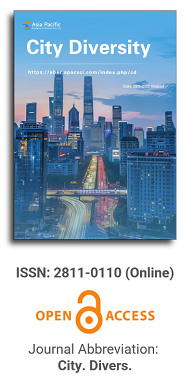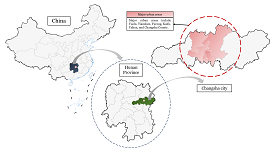
Asia Pacific Academy of Science Pte. Ltd. (APACSCI) specializes in international journal publishing. APACSCI adopts the open access publishing model and provides an important communication bridge for academic groups whose interest fields include engineering, technology, medicine, computer, mathematics, agriculture and forestry, and environment.

As China's pillar industry, the property market has suffered a considerable impact in recent years, with a decline in turnover and many developers at risk of bankruptcy. As one of the most concerned factors for stakeholders, housing prices need to be predicted more objectively and accurately to minimize decision-making errors by developers and consumers. Many prediction models in recent years have been unfriendly to consumers due to technical difficulties, high data demand, and varying factors affecting house prices in different regions. A uniform model across the country cannot capture local differences accurately, so this study compares and analyses the fitting effects of multiple machine learning models using February 2024 new building data in Changsha as an example, aiming to provide consumers with a simple and practical reference for prediction methods. The modeling exploration applies several regression techniques based on machine learning algorithms, such as Stepwise regression, Robust regression, Lasso regression, Ridge regression, Ordinary Least Squares (OLS) regression, Extreme Gradient Boosted regression (XGBoost), and Random Forest (RF) regression. These algorithms are used to construct forecasting models, and the best-performing model is selected by conducting a comparative analysis of the forecasting errors obtained between these models. The research found that machine learning is a practical approach to property price prediction, with least squares regression and Lasso regression providing relatively more convincing results.
The impact of cultural diversity and economic growth on the equalization of public cultural services—Empirical test based on spatial econometric model
Vol 1, Issue 1, 2020
Download PDF
Abstract
The 13th Five Year Plan of the National Basic Public Service System plays an important role in promoting the equalization of basic public services in urban and rural areas. Based on the panel data of 242 prefecture level cities in 30 provinces of China from 2008 to 2018, this paper uses the spatial econometric model for empirical analysis. The study finds that the direct effect of cultural diversity on the equalization of public cultural services is negative and significant, that is, cultural diversity hinders the equalization of public cultural services in the region; the overall effect of economic growth on the equalization of public cultural services is positive and significant, and economic growth is indeed conducive to the promotion of public cultural services equal development in the region. Based on this, it is proposed that local governments should establish a differentiated supply system of public cultural products to effectively integrate local cultural resources, talents, volunteers and social organizations. We will increase financial investment in public cultural services and use government purchases to promote the gradual equalization of public cultural services in rural areas, border ethnic areas and urban rural fringe areas.
Keywords
References
- Sun Z. Analysis on hot topics of equalization of basic public cultural services based on CO word analysis. Intelligence exploration 2017; (3): 25–58.
- Zhang Y, Chen H, Liu Q, et al. Summary of research on Equalization of basic public cultural services. Journal of national library 2018; (1): 31–39.
- Chen Y, Ke Ping. Research on the driving factors of equalization of basic public cultural services. Library 2019; (3): 20–05.
- Zeng M, Hua L, Liu Y. The equalization effect of local financial self-sufficiency and transfer payment on public services -- Based on the panel threshold analysis of 31 provincial administrative regions in China. Finance and trade research, 2014 (3): 82 – 21.
- Liang L. Research on the equalization of basic public cultural services in ethnic areas. Journal of Social Sciences of Harbin Normal University 2014; (5): 21–15.
- Qu R, Zeng Y. An empirical study on the impact of cultural diversity on China’s cultural product trade -- an analysis based on panel VAR model. Journal of Capital Normal University 2015; (4): 57–75.
- Wang L, Li F. Basic public cultural services in China: index system construction and regional gap measurement. Comparison of economic and social systems 2013; (1): 184–495.
- Mao Y, Han Y. Empirical Analysis on the supply level of public cultural services under the new normal. Library forum 2015; (12): 32–28.
- Ye D, Shi S. Culture and economic growth. Journal of Jinan 2016; (2): 74–43.
- Zhu Q. Cultural diversity, organic growth and employment. Science, economy and society 2013; (4): 98–101.
- Luo H. Culture and economic growth: a preliminary analytical framework. Economic review 2009; (2): 112–221.
- Peng L, Pi Y. An empirical study on the equalization of basic public cultural services in Jiangsu Province. Library Journal 2018; (9): 27–35.
- Fu C, Zhang W. Research on Equalization of basic public cultural services—Model construction and empirical analysis. Library Journal 2018; (8): 4–43.
- Xu X, Liu Y, Xiao Z. Dialect and economic growth. Journal of economics 2015; (2): 1–13.
- Jiang W. Market oriented reform, opening to the outside world and China’s regional economic growth. Guangdong Social Sciences 2019; (2): 28–89.
- Zhang B, Fan C. Cultural diversity and folk finance: an empirical study from the perspective of dialect. Financial research 2018; (7): 69–99.
- Lu J, li T. Equalization of public services, population aging and economic growth -- a spatial econometric test based on Provincial Panel Data. Northwest population 2016; (6): 31–18,46.
- Wei H. Tracking analysis on the equalization of basic public cultural services in China since the 11th Five Year Plan. Economic statistics 2016; (1): 30–38.
- Ma L, Liu S, Zhang X. Energy structure, traffic mode and haze pollution—Research Based on spatial econometric model. Finance, trade and economics 2016; (1): 147–760.
- Zhu W, Zheng Z Natural resources, human capital and regional innovation capability—Analysis Based on Spatial Panel econometric model. Research on science and technology management 2018; (13): 97–705.
- Hu B, Mao Y. The impact of transfer payment reform on the equalization of basic public services. Economist 2018; (3): 63–72.
- Hu H, Yuan S. Research on the equalization effect of intergovernmental transfer payment on public services—an analytical framework of spatial spillover effect. Economic management 2015; (10): 1–11.
- Xu Q. China’s resource tax reform and equalization of basic public services. Zhongzhou journal 2017; (6): 57–73.
- Gao H, Yan S. Interaction between industrial structure and regional economic growth—An empirical study based on panel data of Yunnan Province. Modern economy 2007; (6): 55–57.
Supporting Agencies
Copyright (c) 2020 Shaohui Li, Yuqiang Zhang

This work is licensed under a Creative Commons Attribution 4.0 International License.

This site is licensed under a Creative Commons Attribution 4.0 International License (CC BY 4.0).

Prof. Mehmet Cetin
Kastamonu University,
Turkey
Polish Scientific Bibliography

